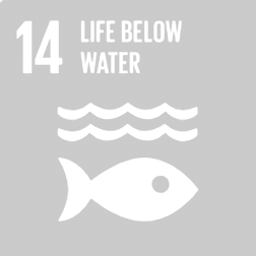Lower Snake River - Impact Area Special Groups
Participating stakeholders will discuss, update and finalize this section. The Group’s objective is to discuss solutions on how to restore the Snake River while also meeting the impact area needs and, most times, improving on what is thought to be possible today. To add your voice, to discuss your concerns and to collaborate on a mutual solution, please Join Us.
Fish Scientists and Anglers - Call to Action
The benefits of dam breaching for wild salmon restoration are undeniable. Through collaboration, we call on all Fish Scientists and Anglers to address the challenges with the urgency required to revive our wild salmon runs and restore the NW ecosystem for future generations.
Clearly establish the sense of urgency imposing existential threat on keystone wild salmon and other fish populations.
Evaluate the ecological impact and benefits of dam breaching on wild salmon populations, including improved migration routes and increased spawning habitat.
Acknowledge the increased survival rates and biodiversity that can result from dam breaching, such as enhanced juvenile migration and reduced predation.
Consider phased approaches and innovative solutions to transition smoothly from dam-dependent systems to free-flowing rivers, minimizing disruption to local communities and ecosystems.
Address the environmental impact of sediment release and water quality changes on wild salmon migrations and explore sustainable practices to mitigate these effects.
By uniting our expertise, we can develop a comprehensive plan that supports both the recovery of wild salmon and the health of our ecosystems.
Challenges & Benefits - Wild Salmon
A subset of topics included as starter - additional to be added by workstream leads and collaborators
Major Issues causing Wild Chinook Salmon Declines according to the EPA and NOAA
Habitat Degradation - Chinook salmon habitat spans a large area, from freshwater to the open ocean, and is vulnerable to changes that impact key life cycles. These changes can be caused by timber harvest, agricultural practices, urbanization, and stormwater pollution.
Harvest Rates & Specifically Alaskan Trawling—Between 1975 and 2018, almost 22 million Chinook salmon were harvested for commercial, sport, subsistence, and ceremonial fisheries. From Jan to Sept 2024, Alaskan Trawlers wasted over 34,000 Endangered Wild Chinook Salmon and 44,000 Endangered Wild Chum Salmon, both protected by the Endangered Species Act. These numbers are extremely low compared to reality as they only show numbers that observers recorded. Not all ships have observers, nor are observers present 24/7.
Dams: Dams block salmon from reaching their historical spawning habitats, and the remaining habitat is often too warm for eggs and fry to survive.
Warming Water Temperatures -
Federal judges found the dams were imperiling salmon and violating the Endangered Species Act and treaties with tribal nations. Each case led to small changes, such as allowing for the release of more water from reservoirs or investments in hatcheries programs. —> The US Federal Justice system has already found that the dams are violating US Federal Laws. The data, facts, and reality are clear about wild chinook salmon going extinct because of these dams.
“For Snake River stocks, the centerpiece action is restoring the lower Snake River via dam breaching.” Ref. Rebuilding Interior Columbia Basin Salmon and Steelhead, NOAA Fisheries, 9/30/22
The science is clear and compelling, supported by decades of rigorously peer-reviewed published reports and manuscripts: removing the four lower Snake River dams is essential to avoiding extinction and rebuilding populations to healthy and abundant levels. There is no credible scientific dissent. Inaction will lead to extinction. Ref. American Fisheries Society, Congressional Briefing Snake River Rebuilding Fact Sheet.
The Columbia Basin Partnership established a “healthy and harvestable” goal for Snake River salmon (NOAA Fisheries 2020: A Vision for Salmon and Steelhead), and intended to be consistent with U.S. treaty and trust obligations to Tribes.
Quasi Extinction - 77% Spring / Summer Chinook populations are predicted to be at or below 50 spawners by 2025.
Washington State’s score for United States Sustainable Development Goals is 58.1%. Of 17 overall goals, breaching the four Lower Snake River dams will have a positive impact on the 2 below.
In the Pacific Northwest, the Columbia River basin dominates the landscape, stretching across 250,000 square miles and seven states. The Snake River, the main tributary of the Columbia River, was once free-flowing and teeming with salmon and steelhead, with more than two million fish returning annually. Between 1961 and 1975, the U.S. Army Corps of Engineers constructed four dams on the lower Snake that dramatically reduced the survival of migrating salmon and transformed the once free-flowing river into a series of warm, slow-moving reservoirs. Today, only 1-2% of the historical numbers of wild fish return to the Snake River. Despite billions spent on habitat improvement and fish passage, extinction is looming for the once abundant anadromous fish. Snake steelhead, Snake fall Chinook, Snake spring/summer Chinook are listed as threatened, Wild Snake sockeye are endangered, and Snake coho are already extinct. — American Fisheries Society (AFS).
Additional Topics & Resources
TBD by Subject Leaders and Experts
This section to be developed by the Leads in the Unification.
If you are a wild salmon or fish expert who would like to collaborate in restoring the Snake River please Join Us.
The Answers are Out There
We only need to ask HOW.




